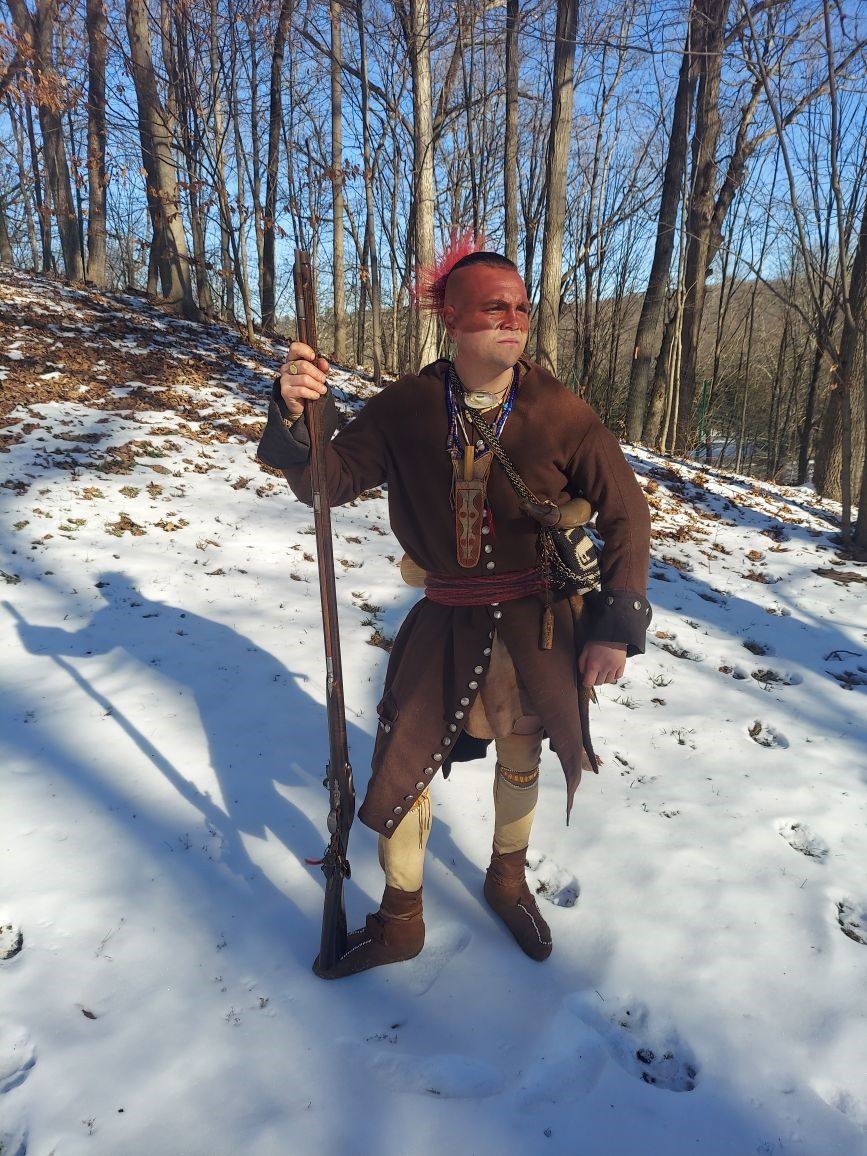
Drew Shuptar- Rayvis; Northern Cultural Ambassador of the Pocomoke Indian Nation and Algonkian Living Historian of the 17th and 18th century
Leggings – During the middle 17th century in the southern New Netherlands colony, among the Algonkian people, leather leggings made of deer skin or elk skin were worn by both men and women (Van Der Donck , Rasier). Eastern leggings are very tight to skin and are made this way for added comfort, ease of movement and warmth. Like moccasins, these leggings would have been sewn using the awl and leather cord method, eastern leggings tend to have a flap that runs the length of the legging, that is two to three fingers wide, the leggings are secured to the waist with thin leather strips that tie on to the leather belt around the waist.
For men leather leggings come up to the knee and for women they come to just below the knee cap with no strap. This is due to the fact that women would wear a leather or duffel wrap around skirt that was knee cap length and higher leggings were not necessary, men prior to Europeans, would either be shirtless or in the winter and fall be covered in a skin mantle of deer or bear skin or a cloak made of woven turkey feathers (Isaac De Rasier, letter to Samuel Blommaert 1626). Once the Dutch arrive , Algonkian people begin to trade for European shirts and duffels. Leggings were generally plain, but some were decorated, Adrianne Van Der Donck a famous Dutch WIC (West India Company) lawyer wrote in his 1655 book “A Description of New Netherland” “Men’s and women’s stockings and shoes are of deer or elk skin, which some decorate richly with sewant (wampum beads), but most wear them as they come. (pg80).
Drew Shuptar- Rayvis; Northern Cultural Ambassador of the Pocomoke Indian Nation and Algonkian Living Historian of the 17th and 18th century

